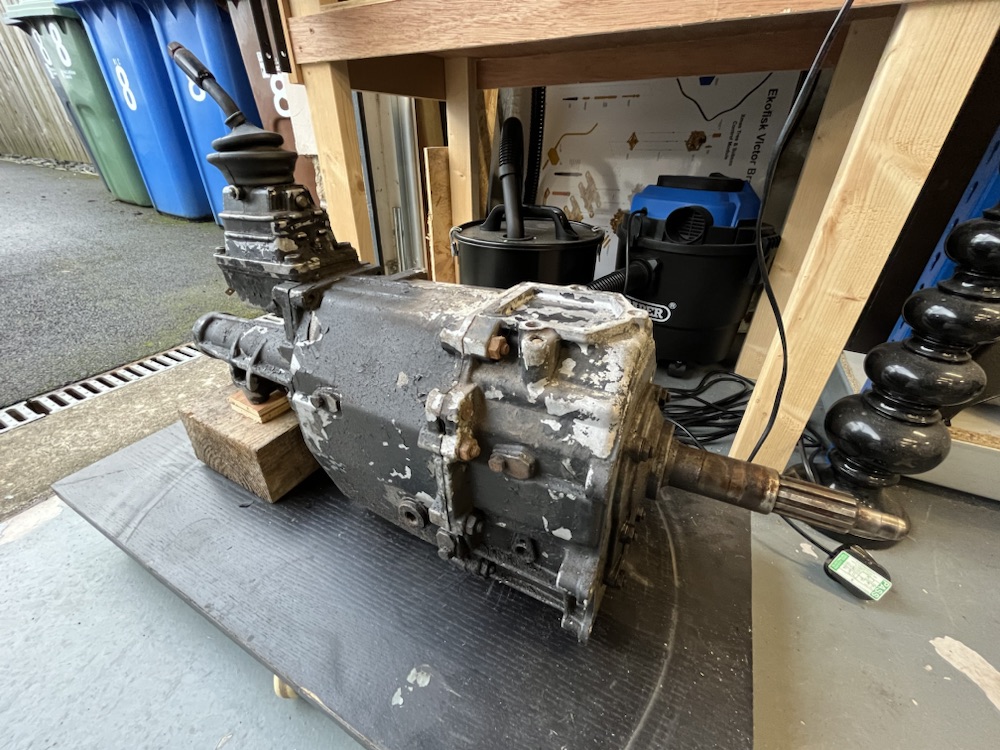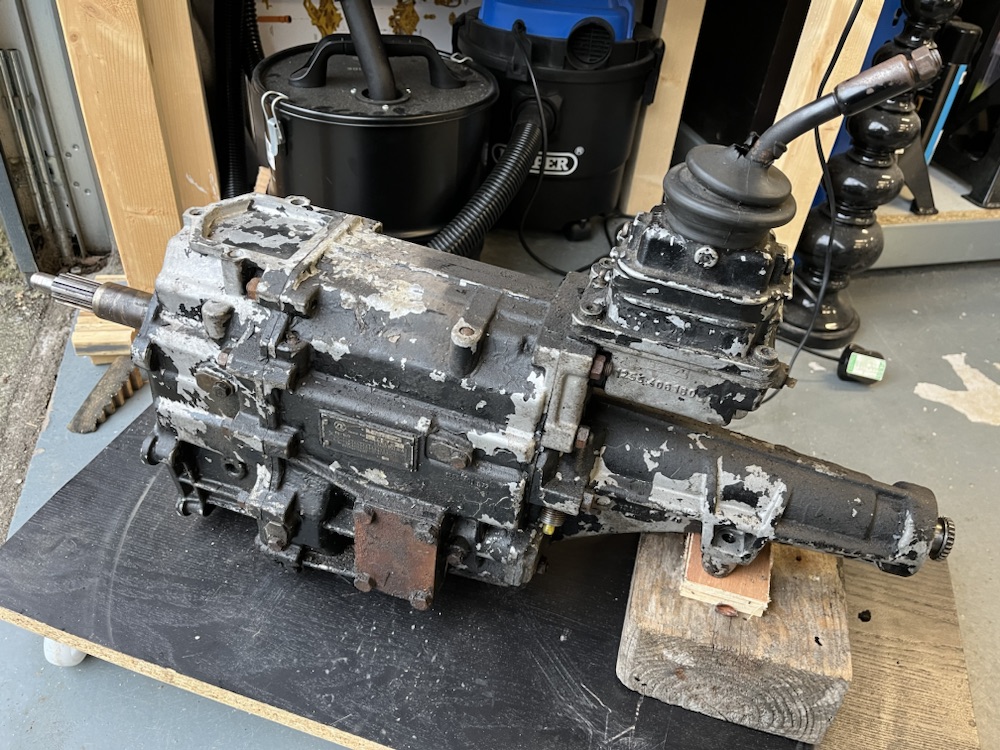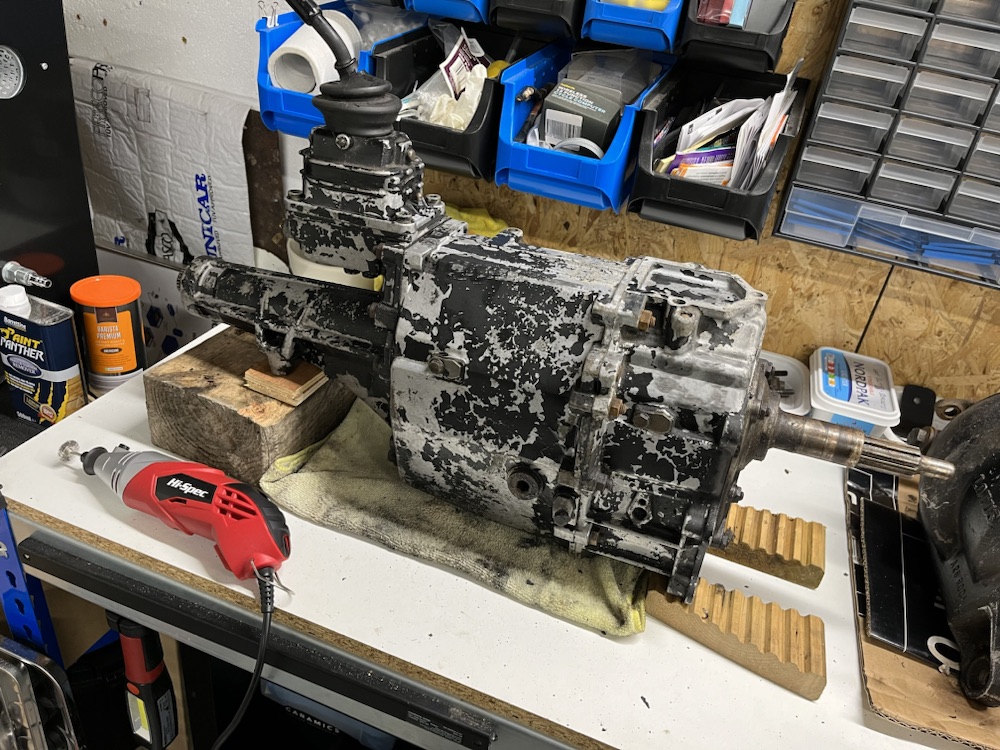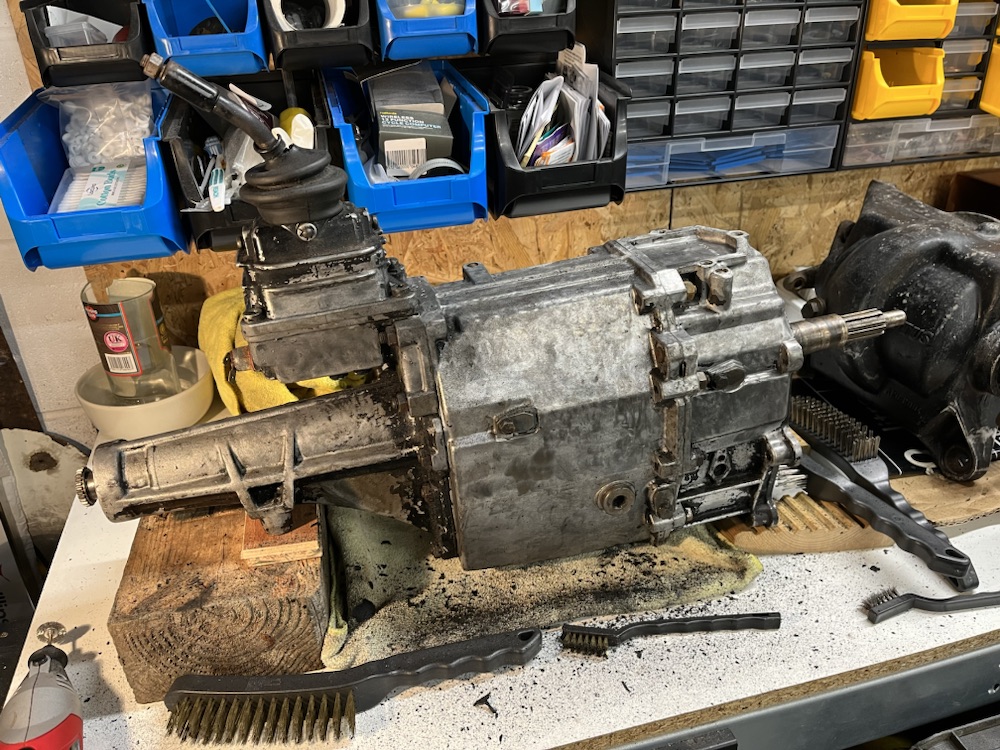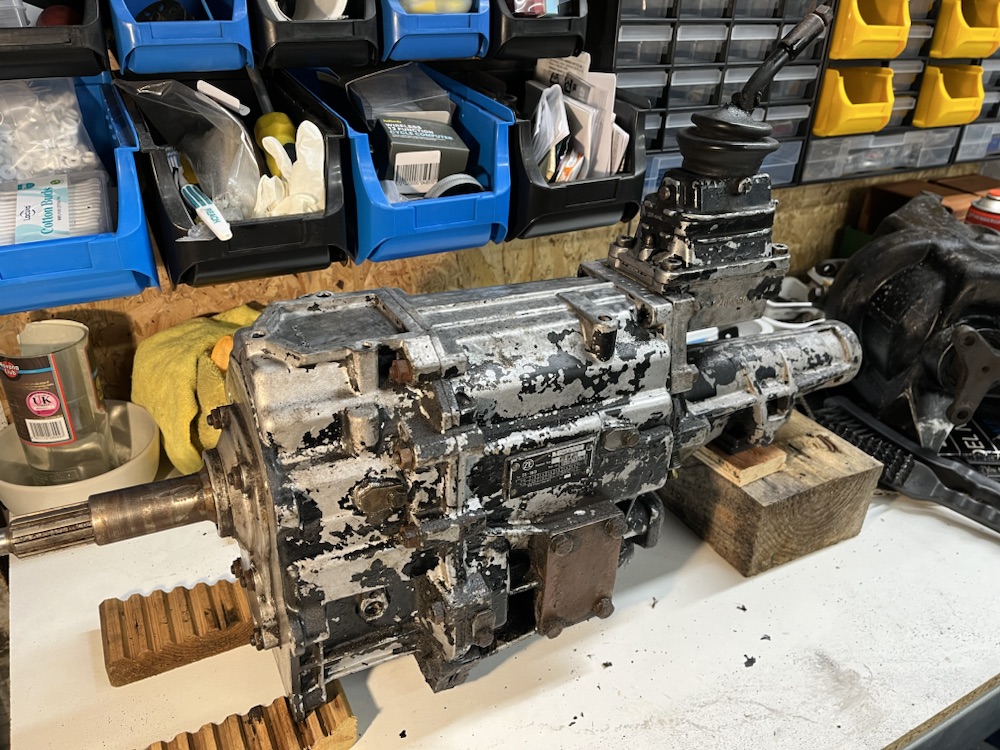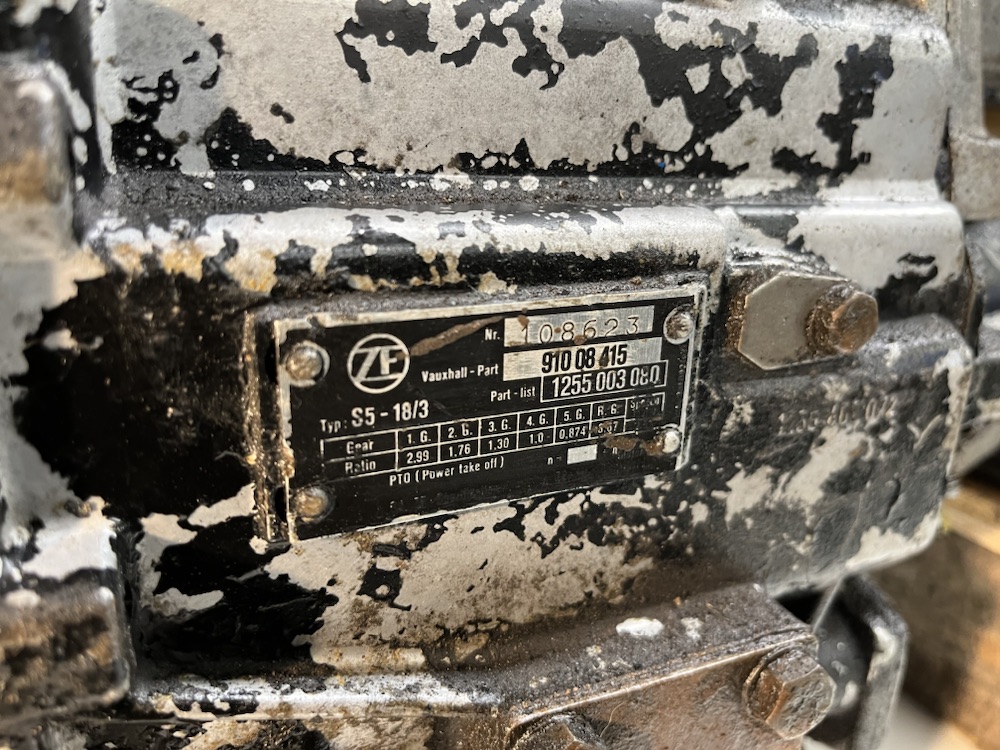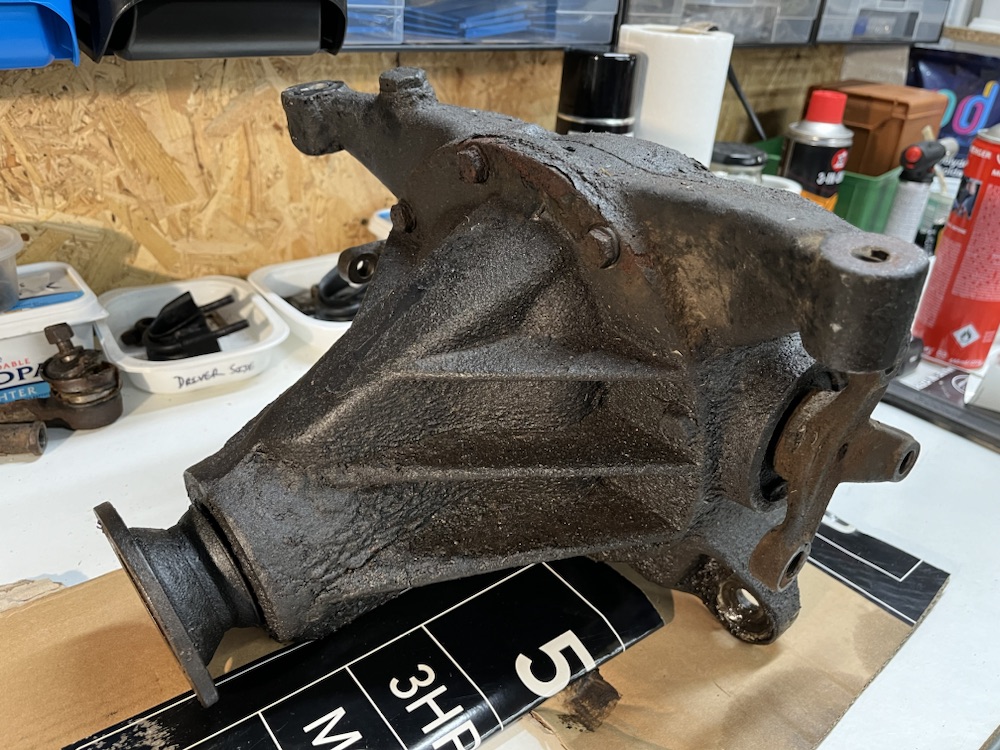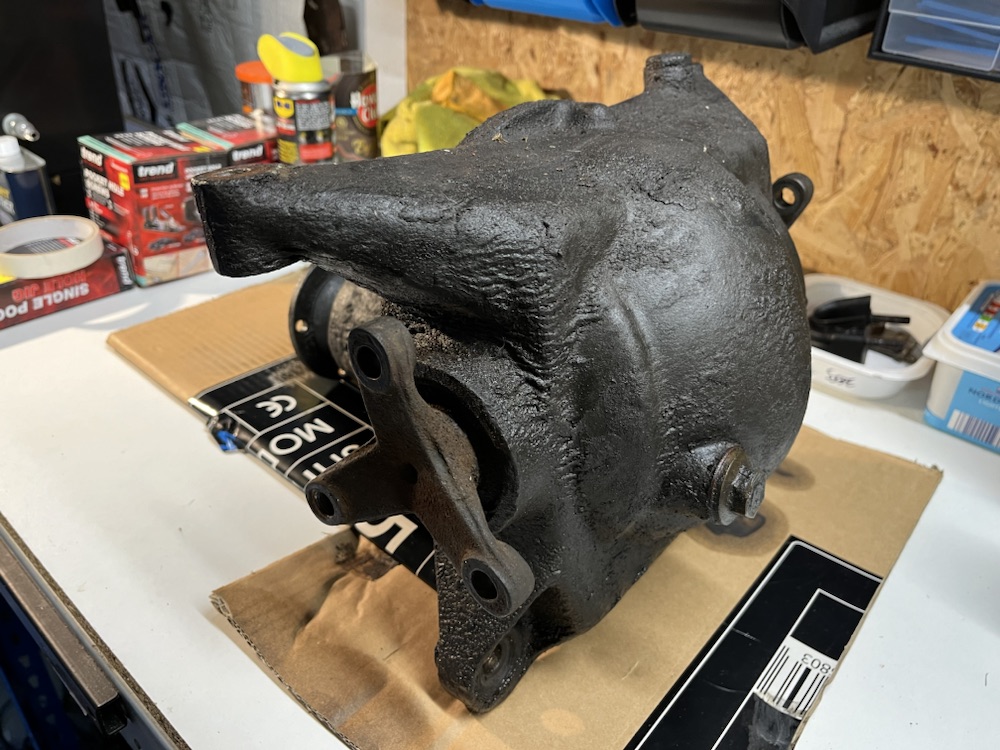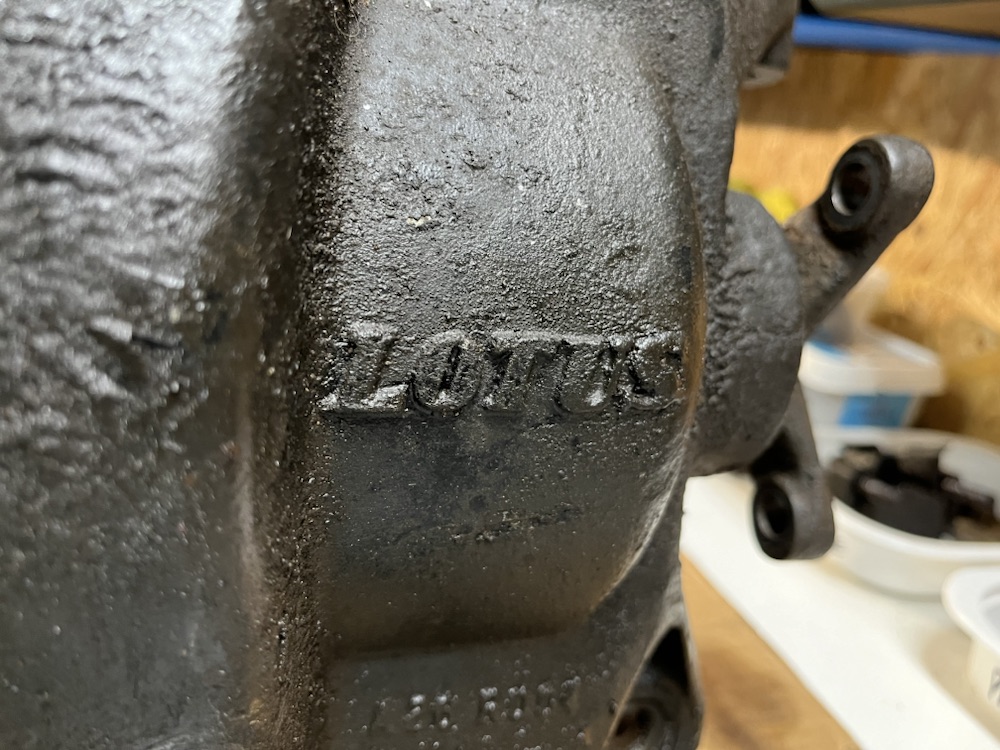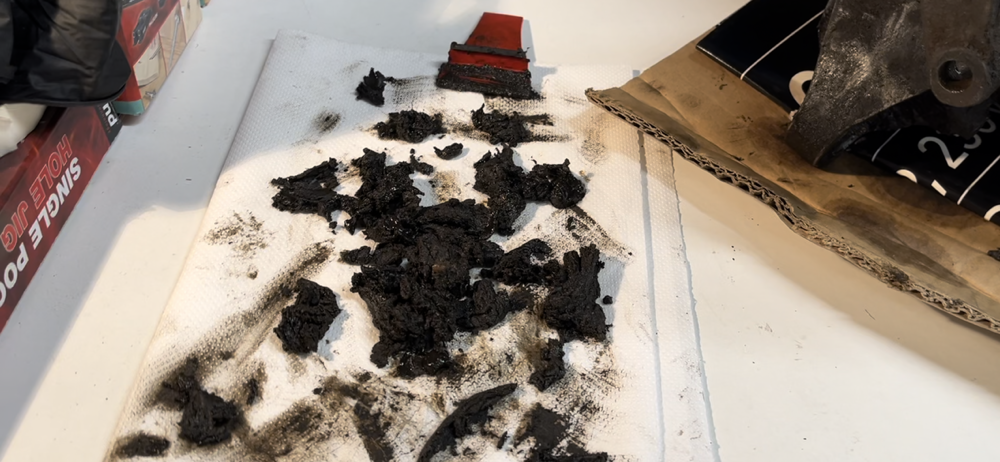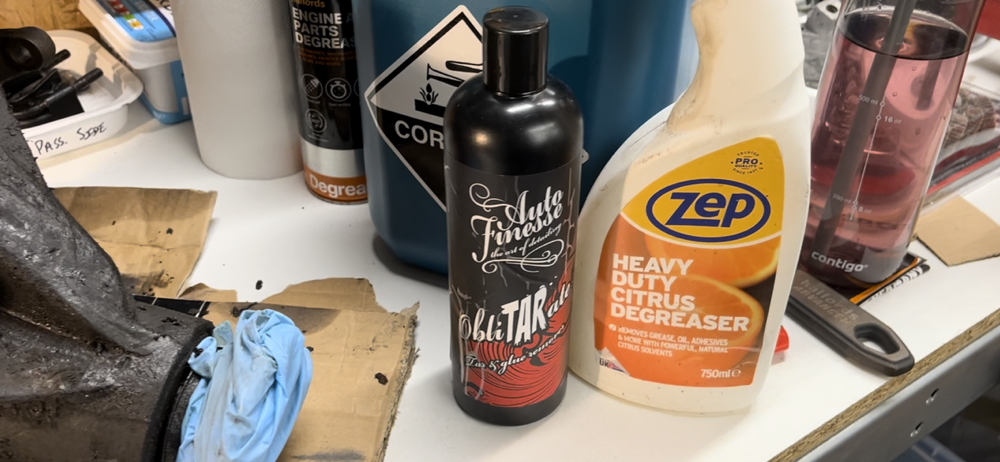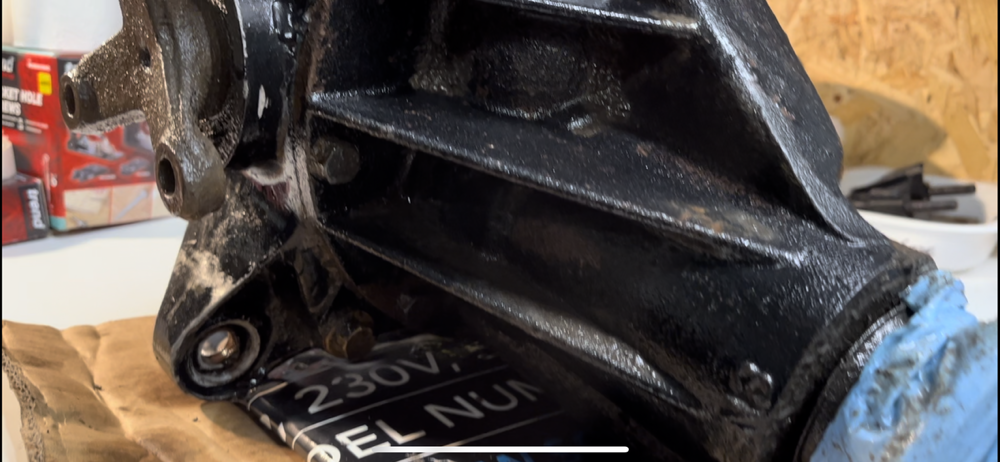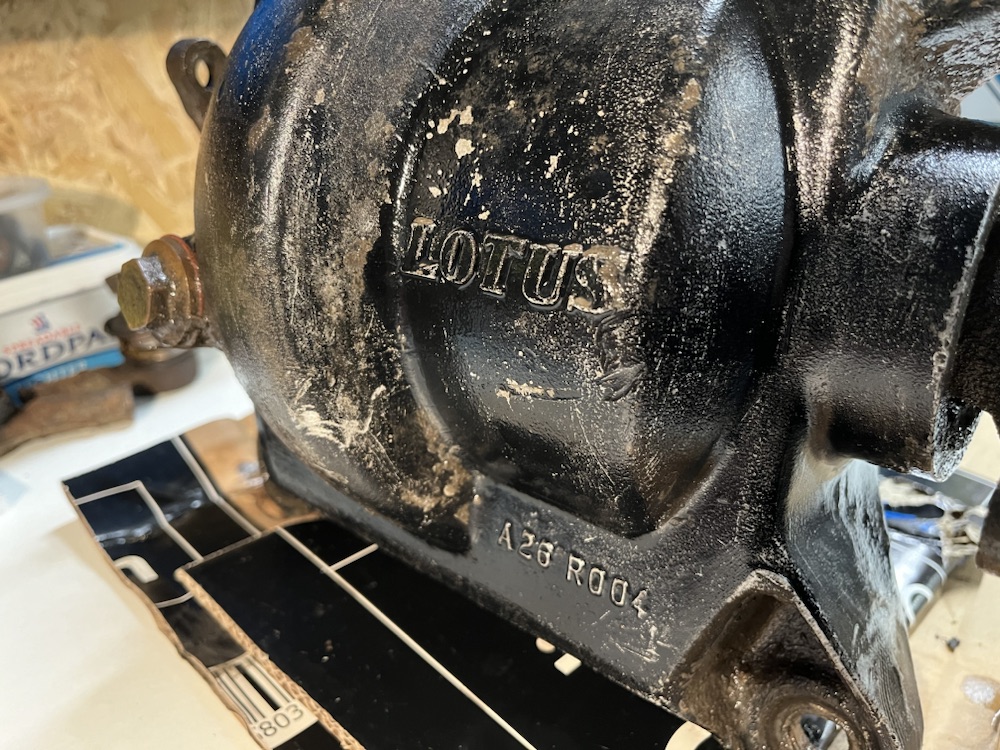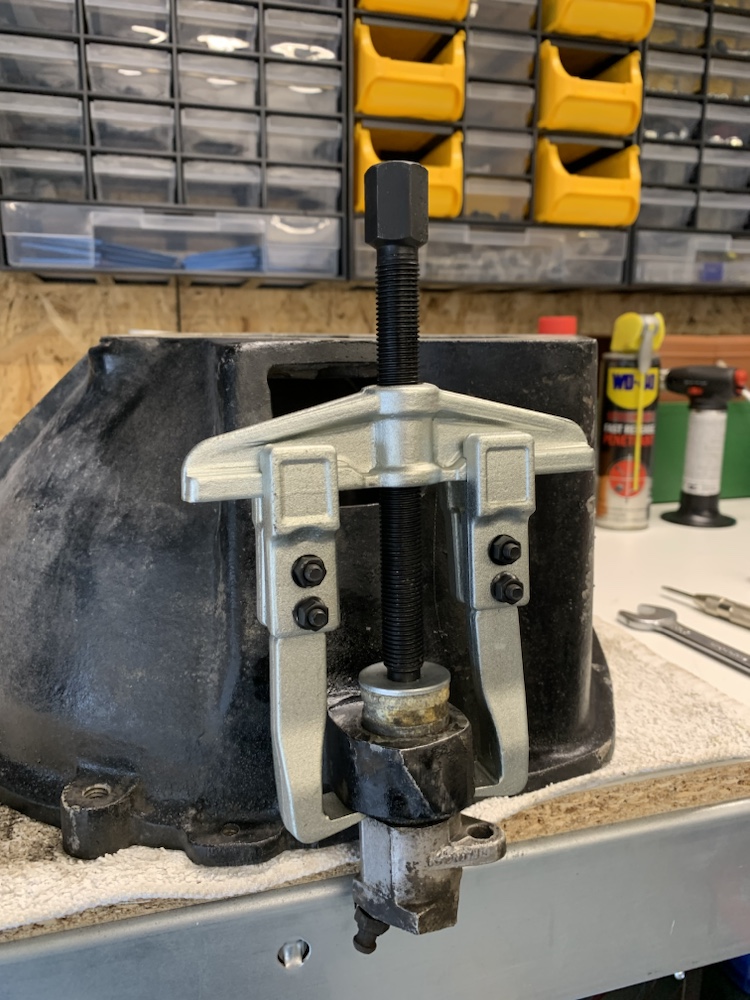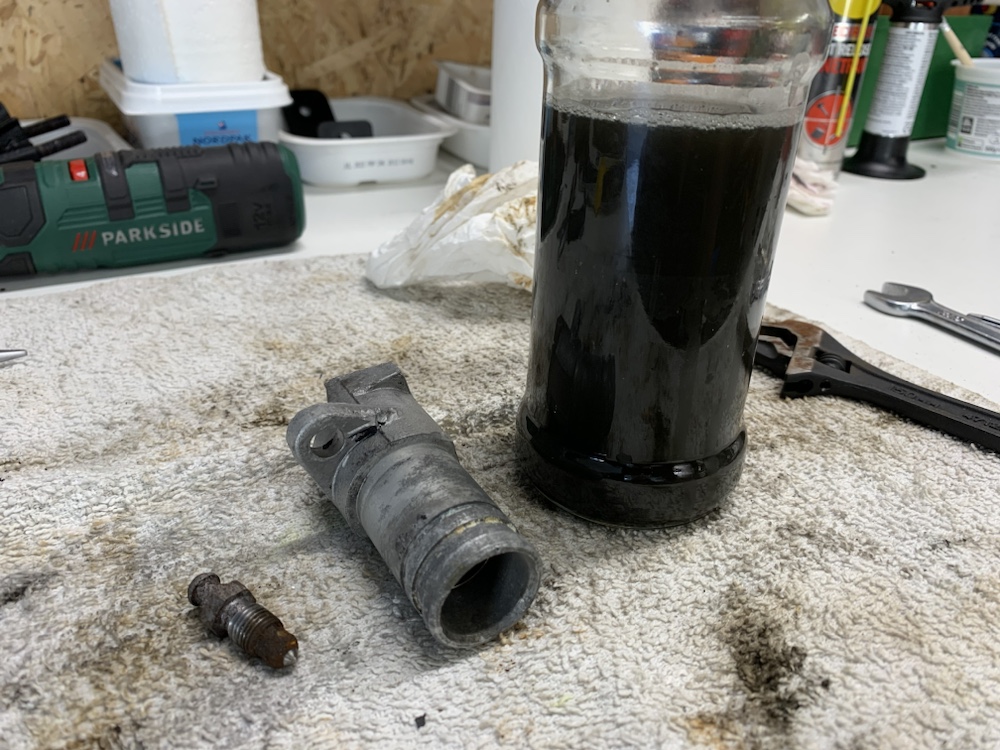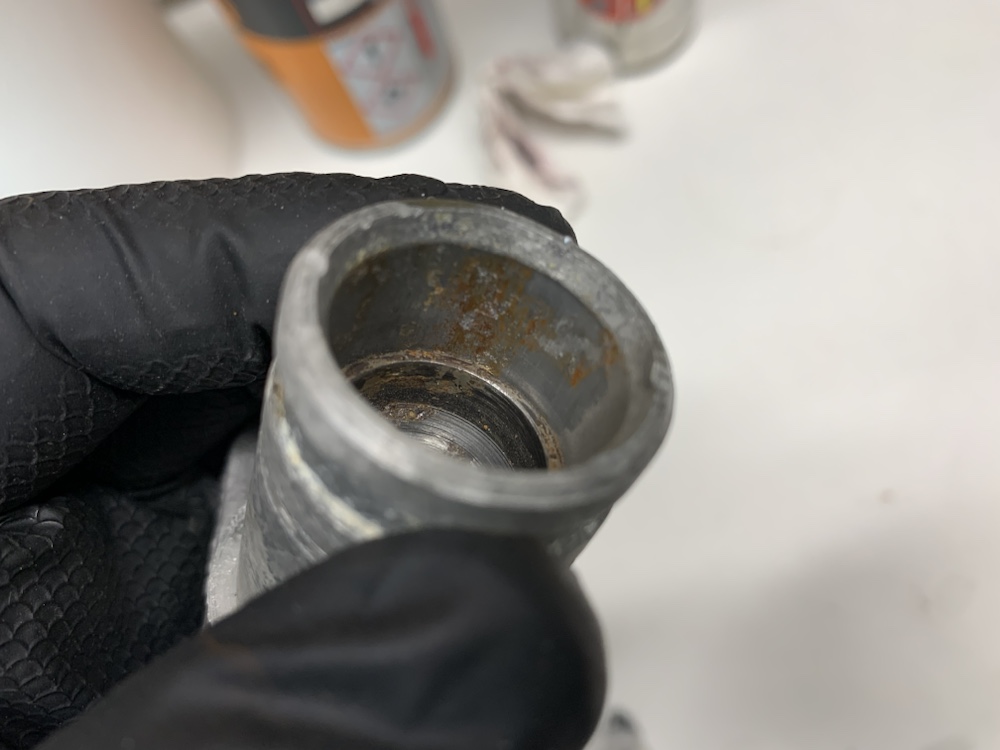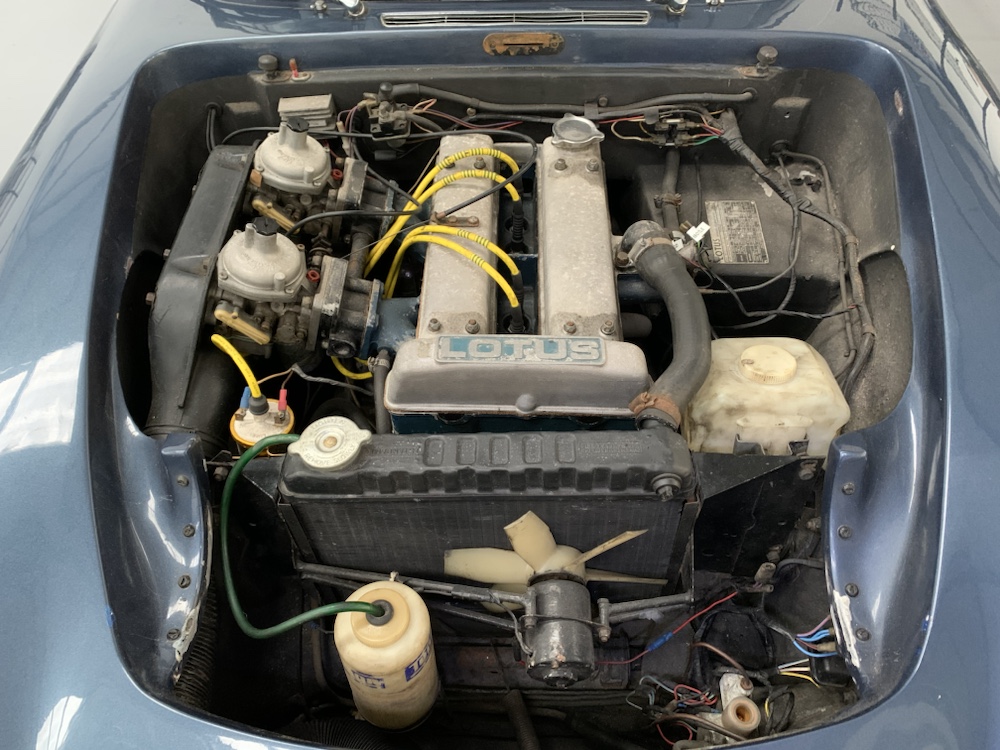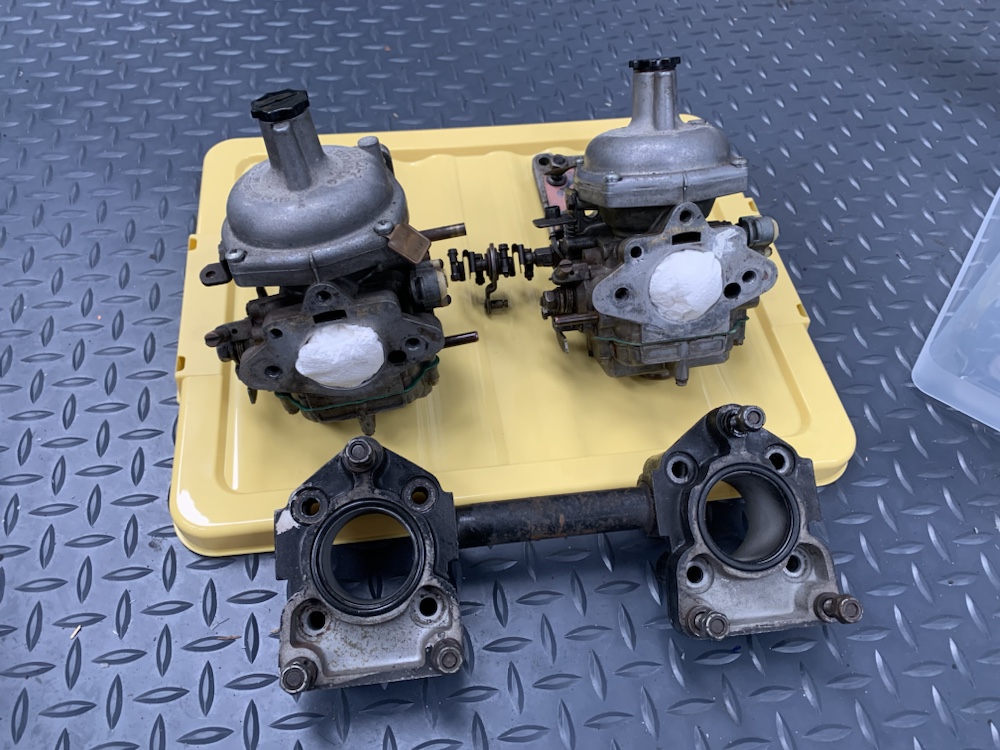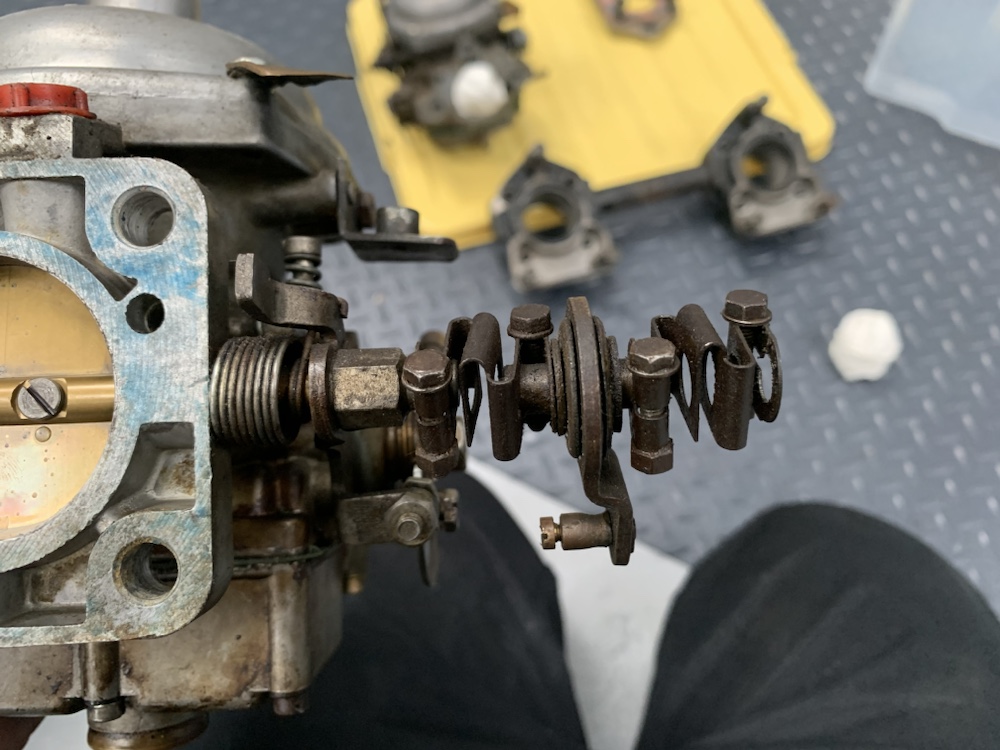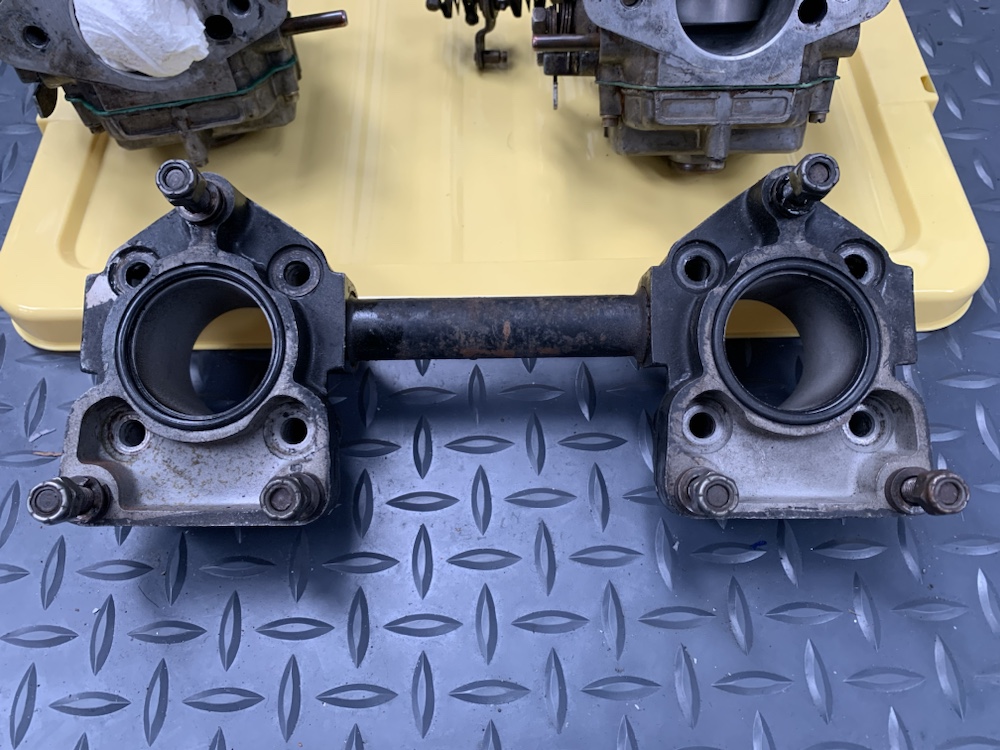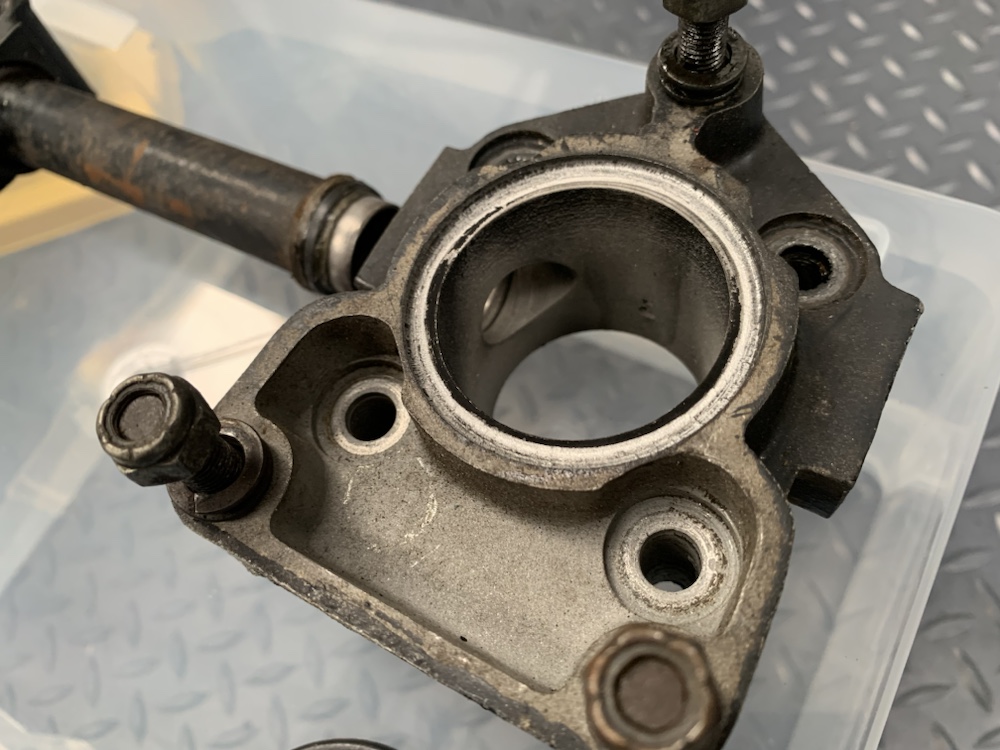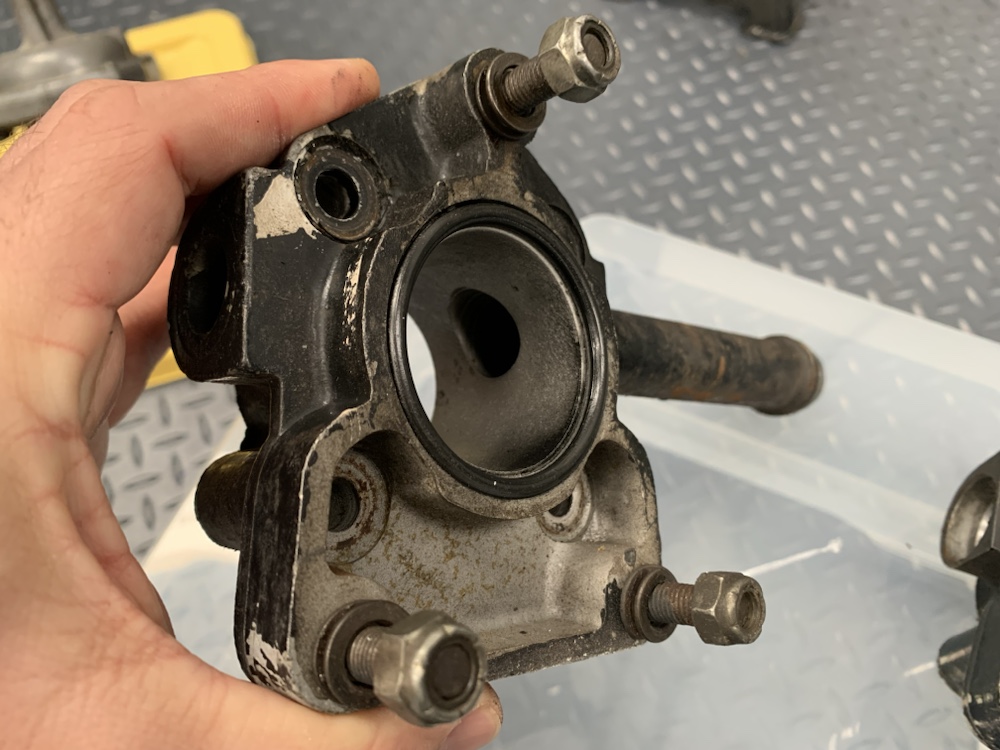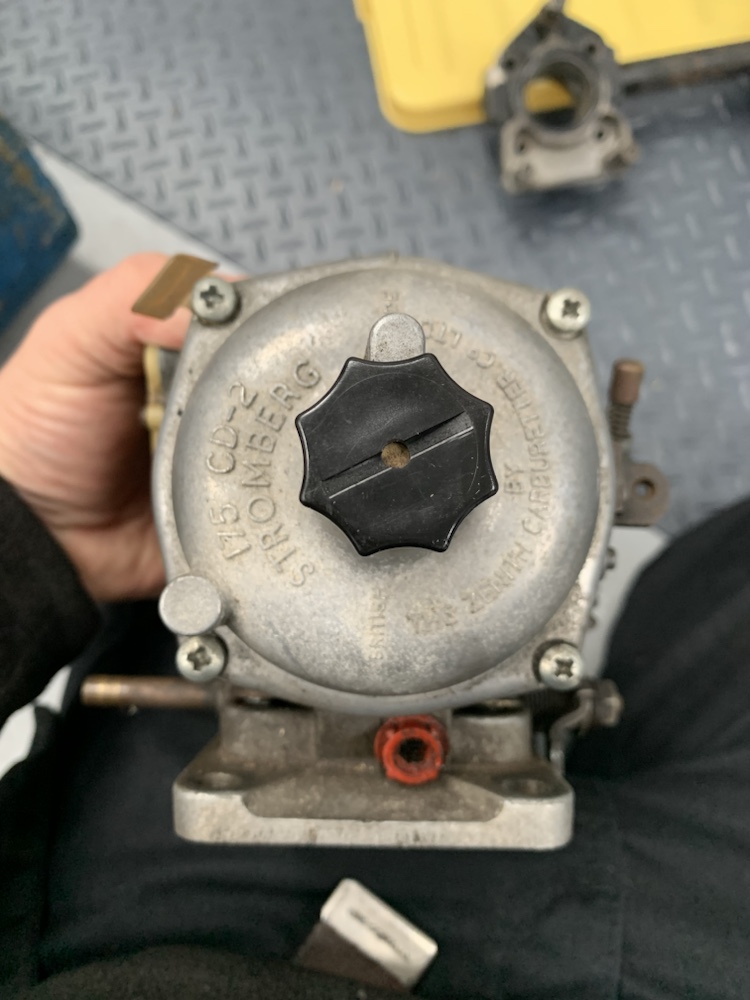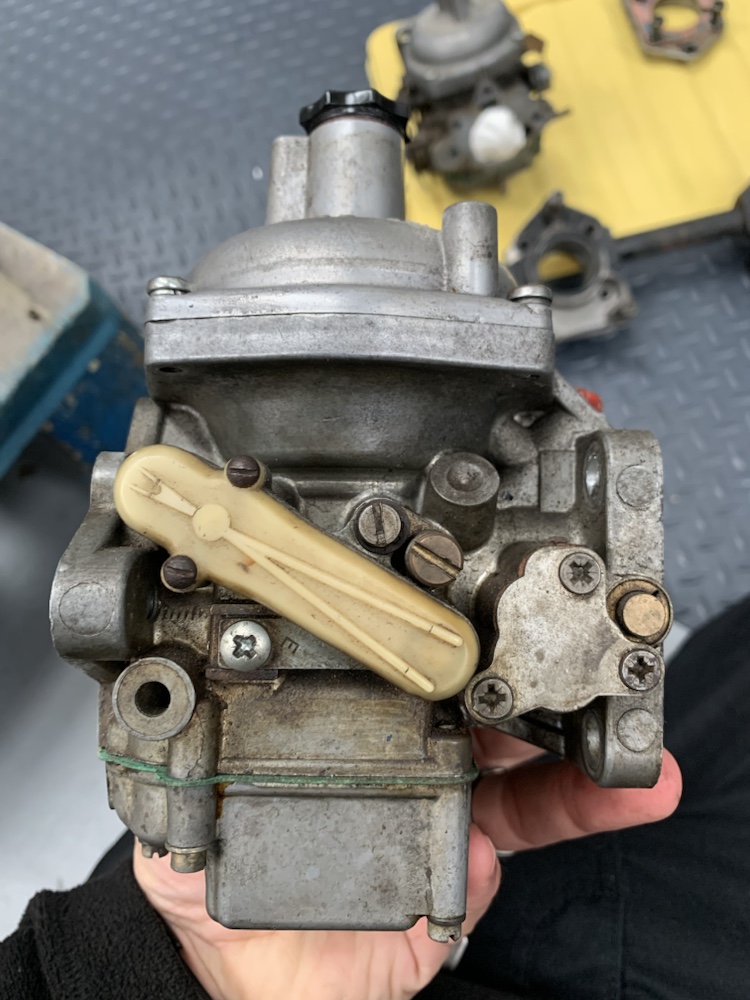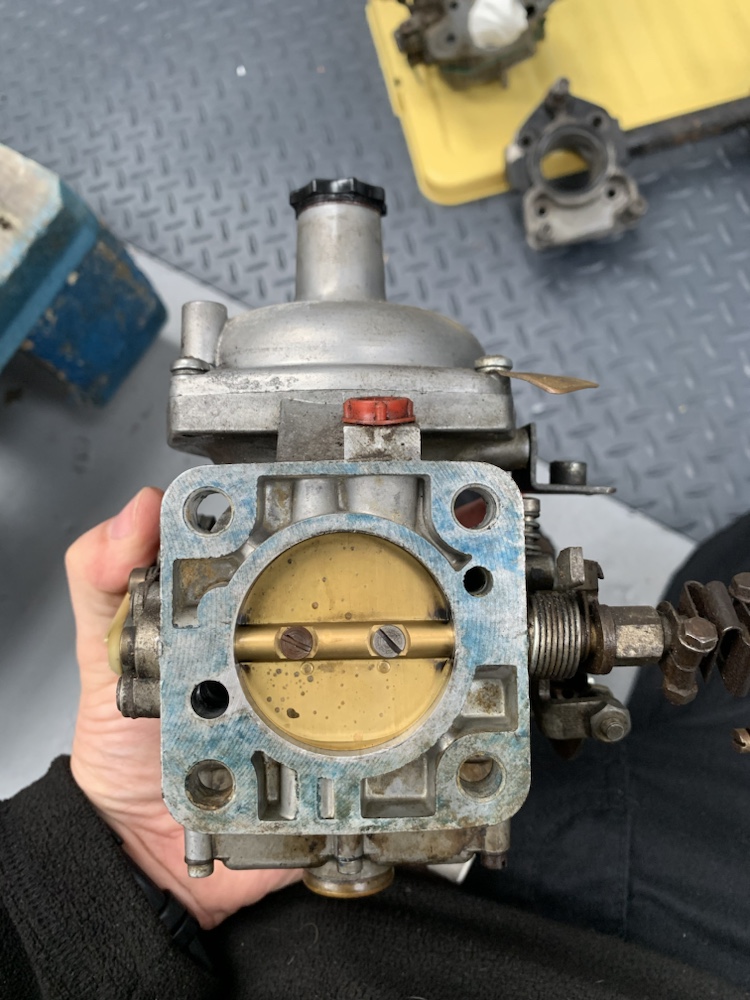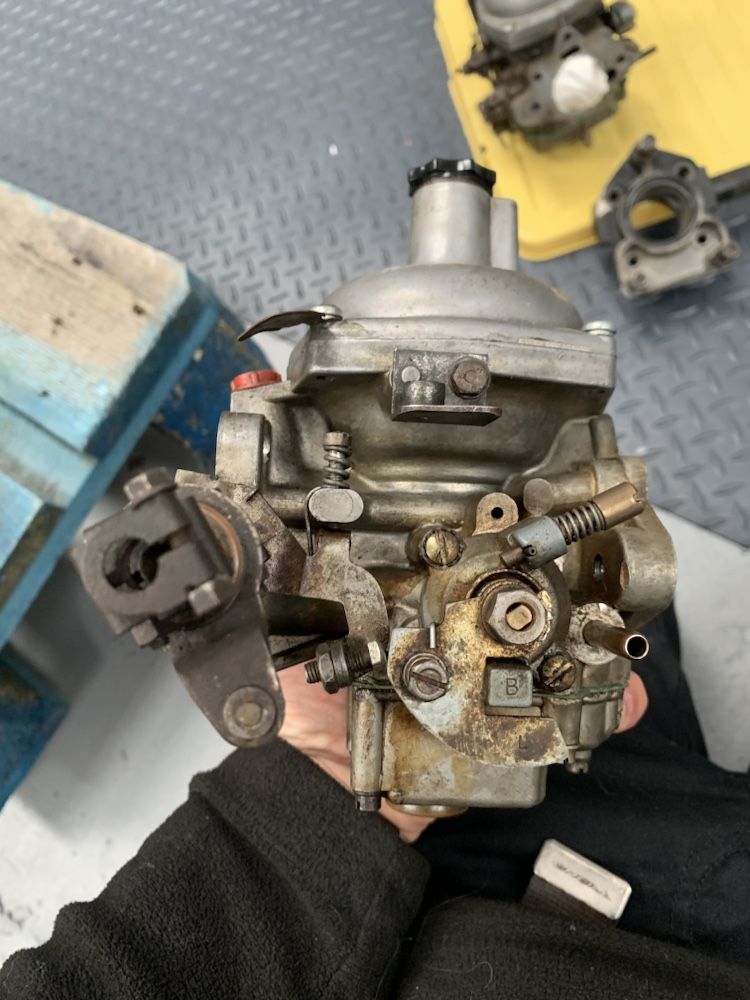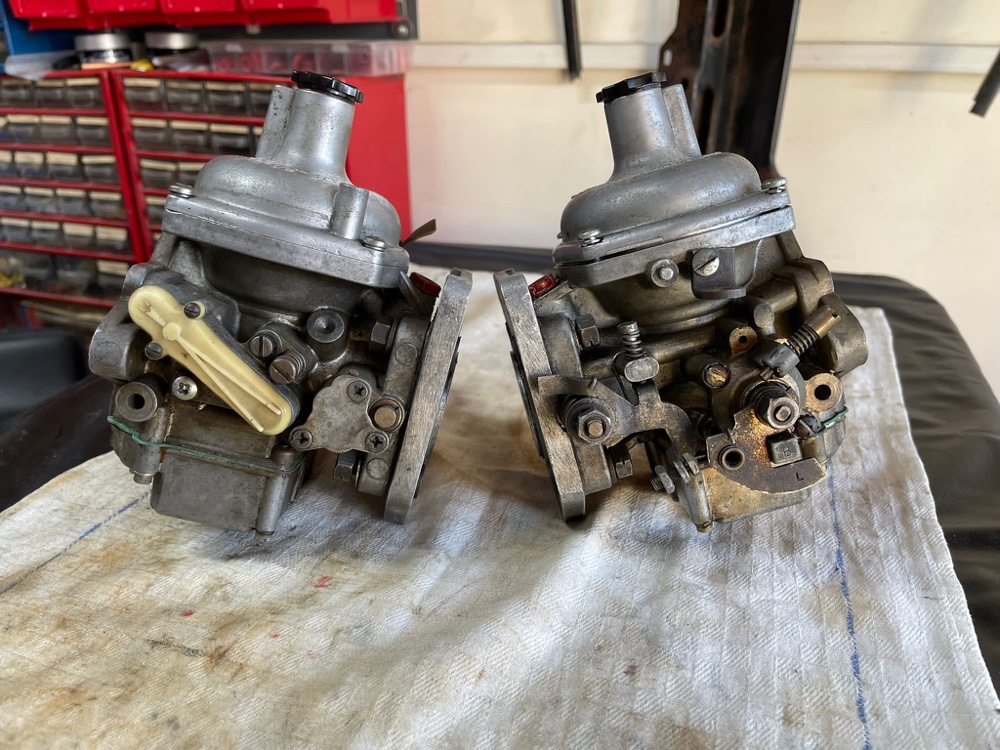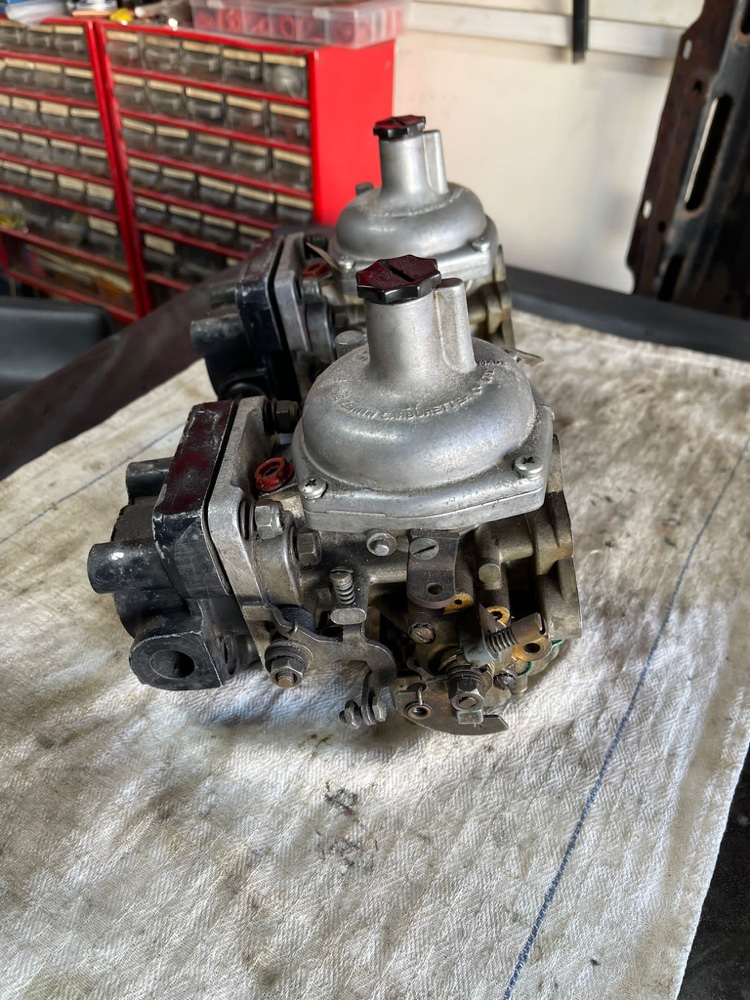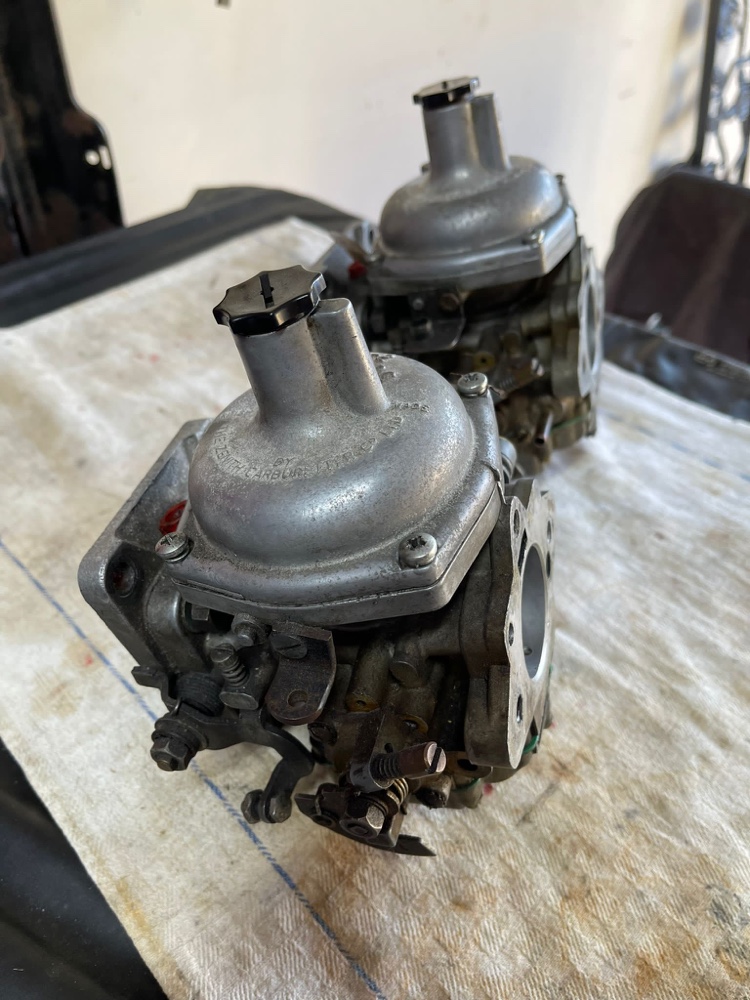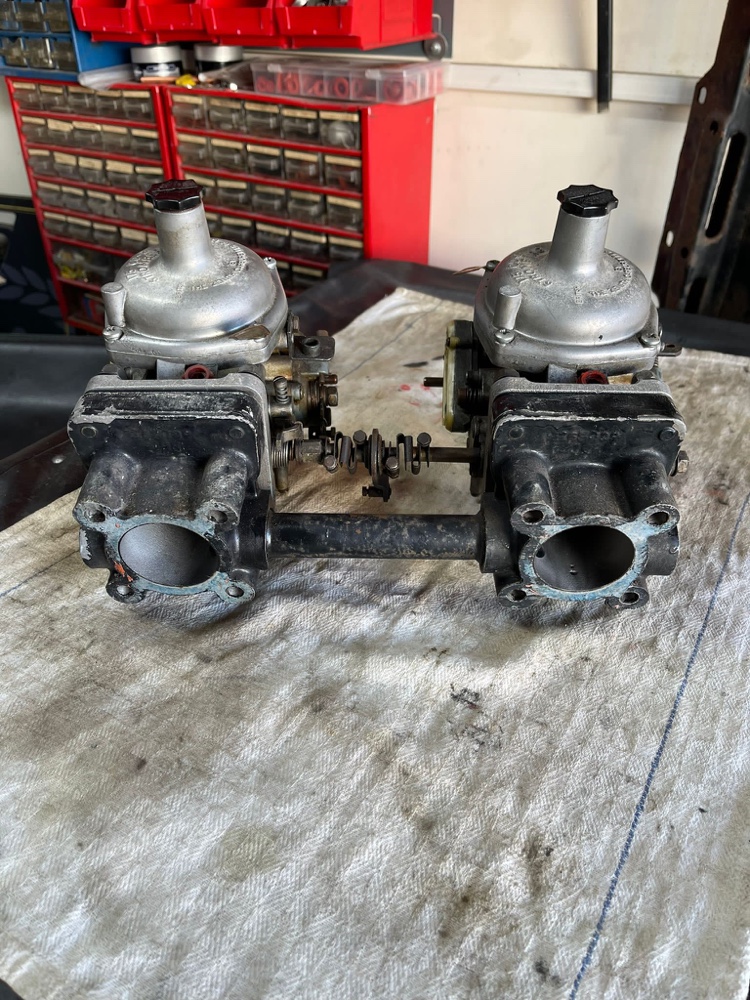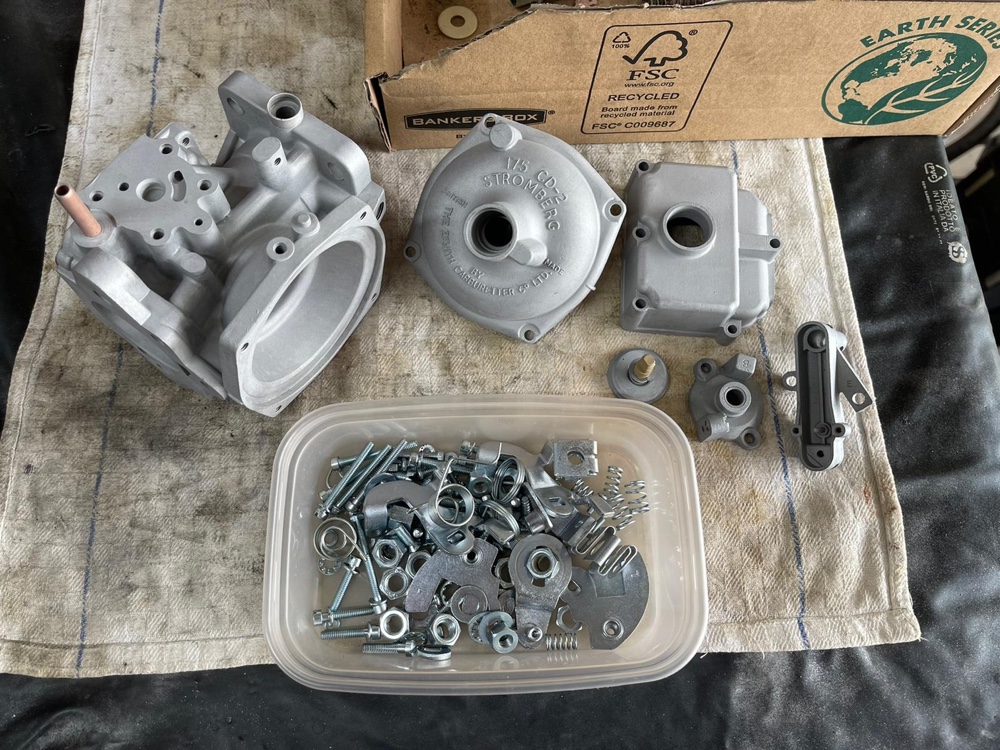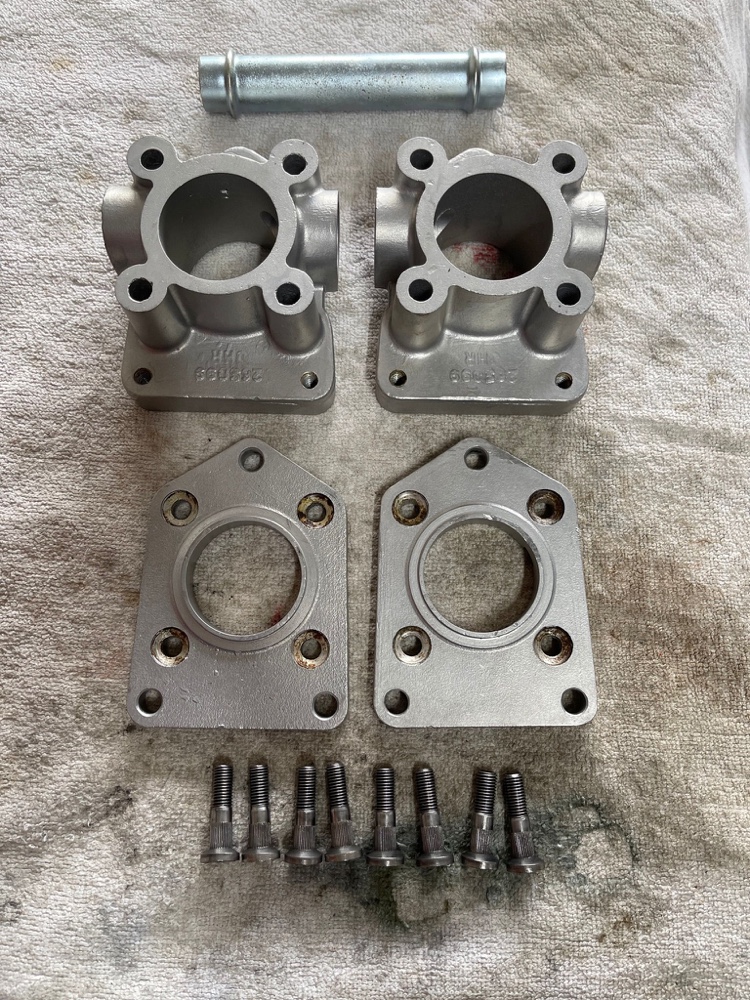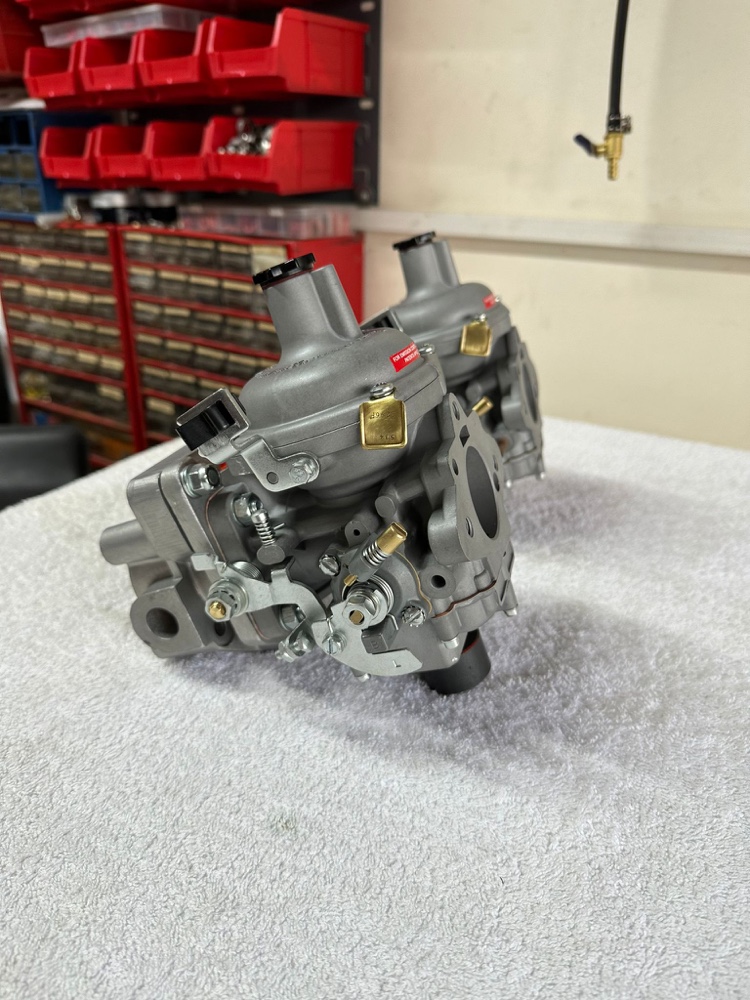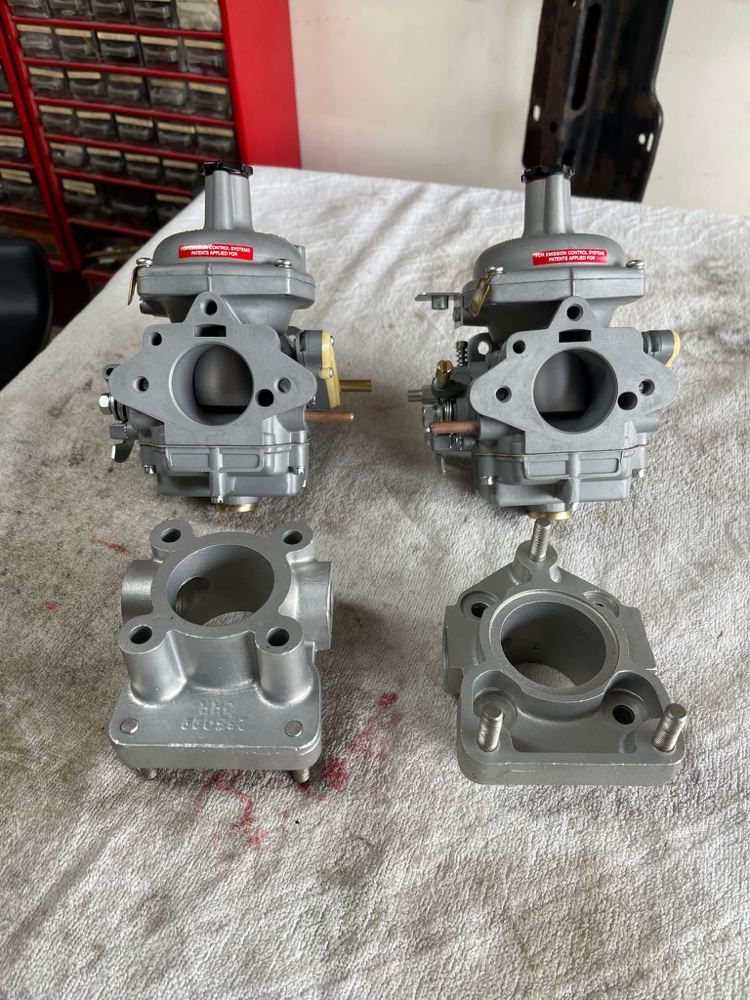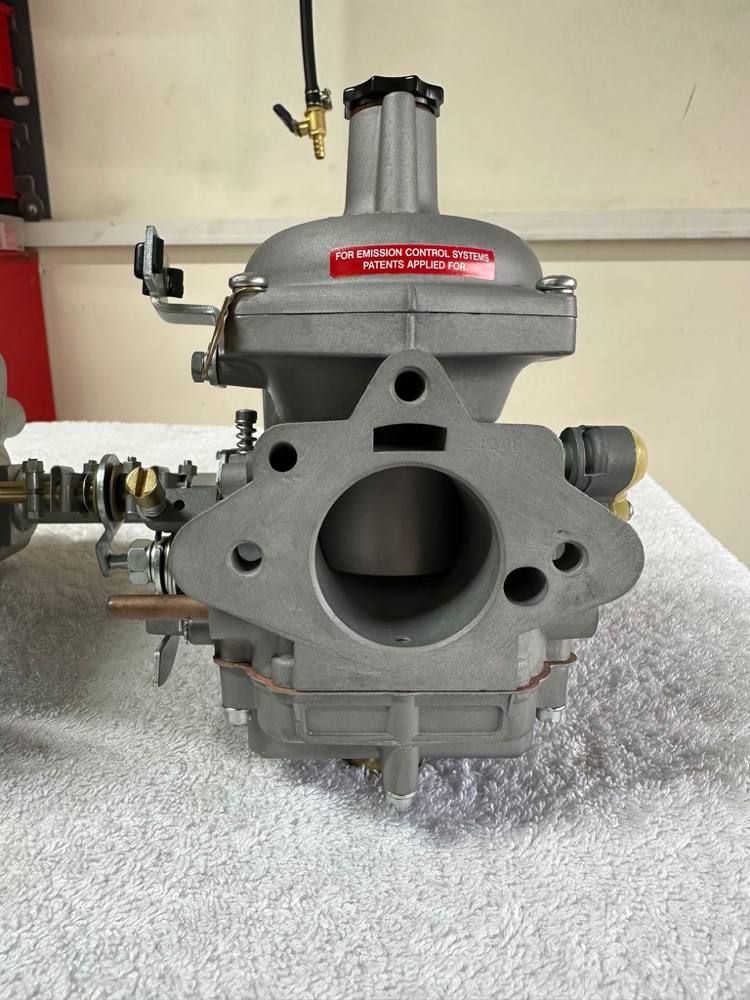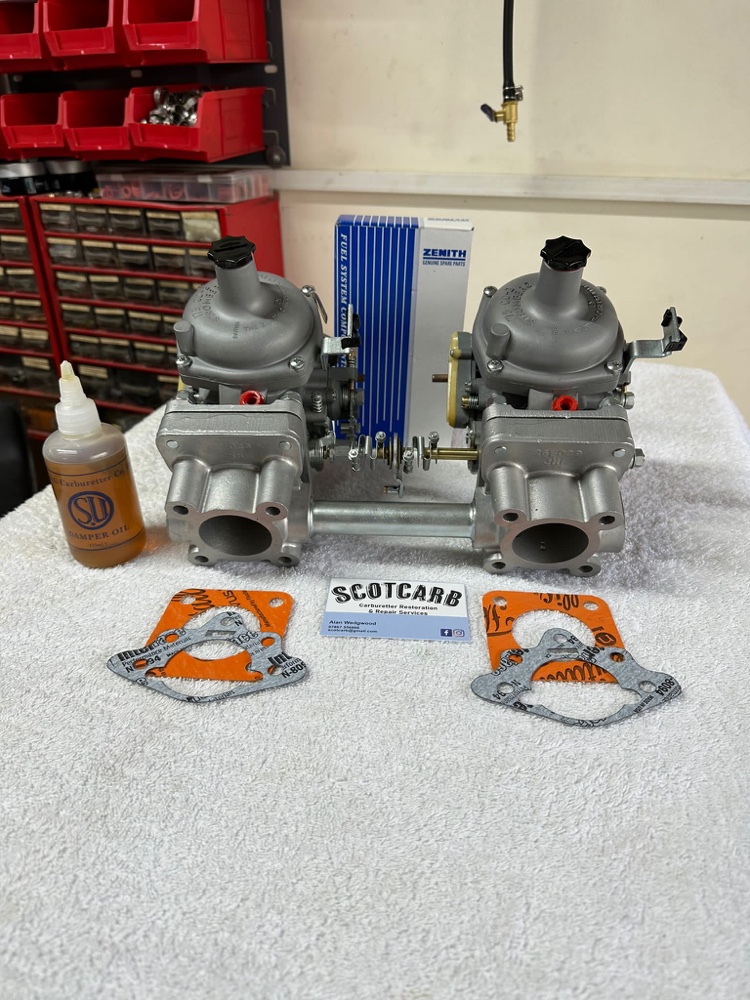Time hopping again, early Sept 2021, stripping down the chassis further…
All the brake lines had utterly seized unions and the pipes were getting replaced anyways, so they just got the snip.
Annoyingly, the handbrake cable’s threaded adjuster was snapped and also seized.
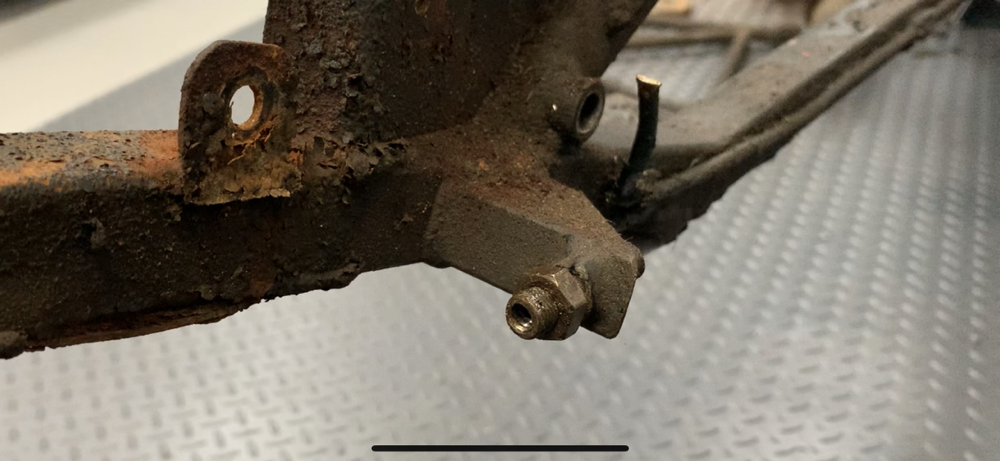
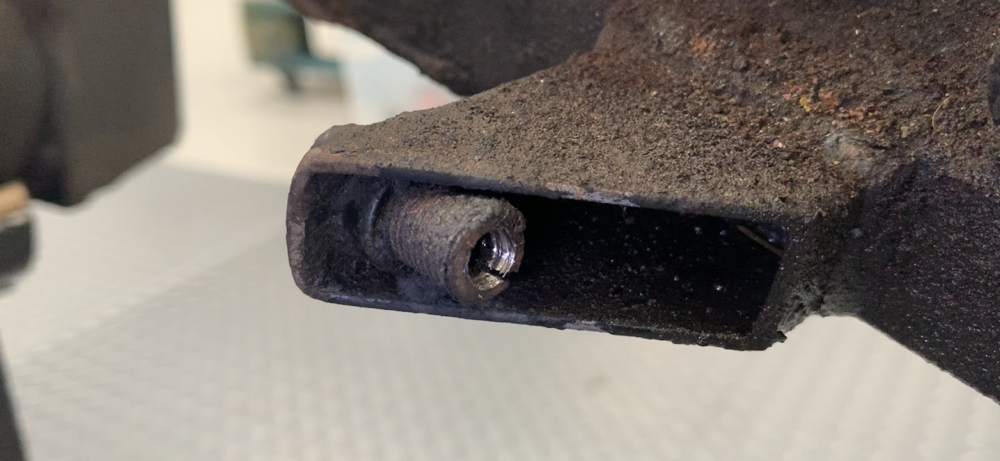
The initial theory was; snip the cable, double nut the section of adjuster tube, wind it out. Snipping the cable went fine, just the part afterwards that didn’t. Not enough thread to get a second nut on properly, thread puller exploded the lock nut, then flat out further refused to shift the threaded sleeve still trapped inside the thread on the chassis.
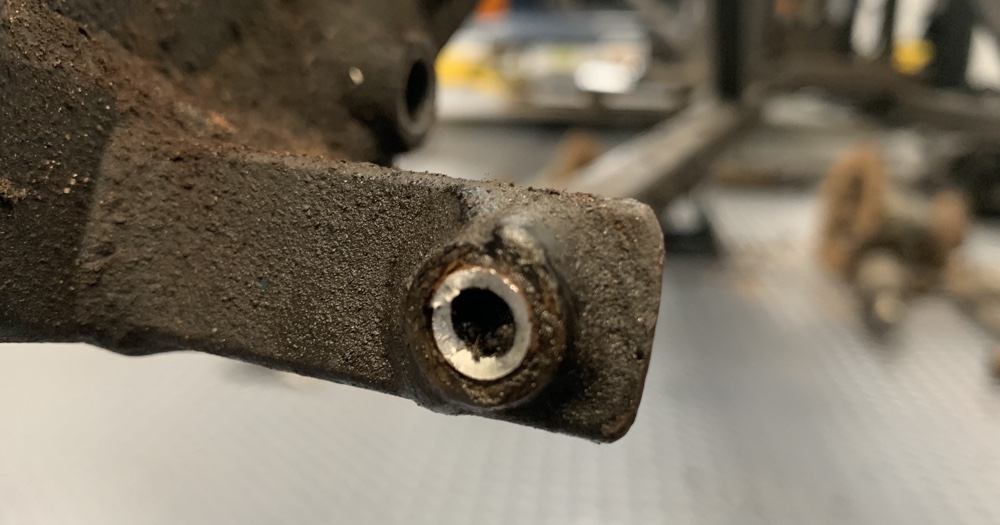
Copious amounts of release oil and applications of heat didn’t change its mind. Wound up accepting defeat and getting a new thread welded in with the rest of the frame repairs.
The handbrake tree was the next to ruin my happiness. You can see it fully assembled in this picture [circled blue].
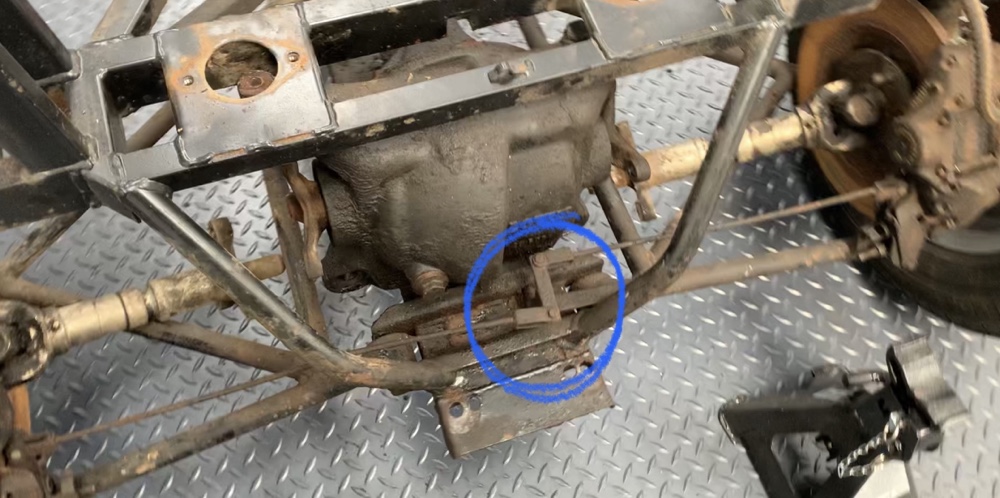
According to the build book, one simply undoes the nut, slides out the through bolt, jobs a good-un.
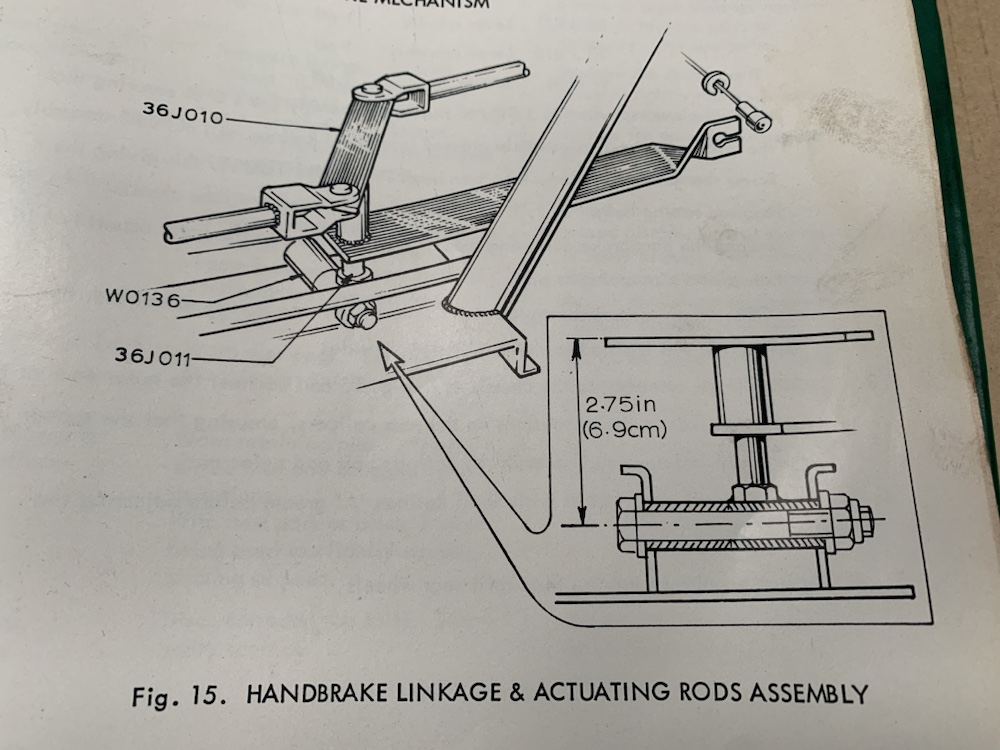
Once again, the Elan said no. The nut came off fine, but despite release oil, heat, impact gun threading the nut back on a few threads and twatting it with 2kg hammer… all in vain.
It doesn’t help that the access is severely restricted by the flanges on the mounting plate and their welds.

Out with the centre-aisle Dremel copy. Wanted: one replacement handbrake tree…
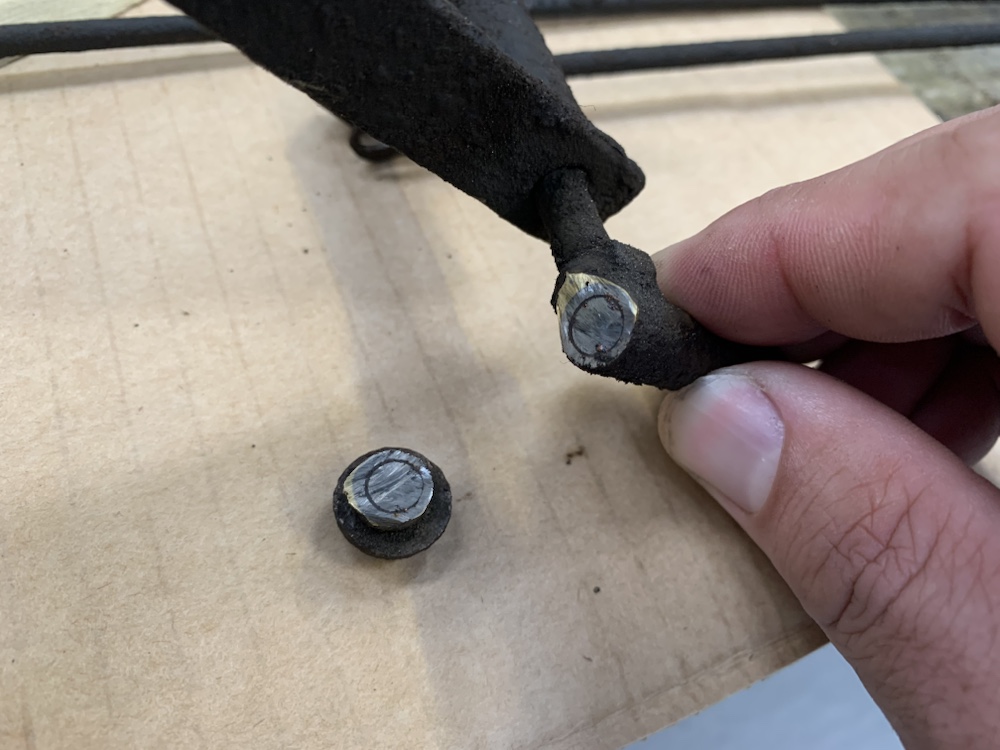
Next up was removing the rear gearbox mount. Would be slightly facetious calling it a scrap heap challenge special, but its definitely got an air of “heres a box of spare bits, make it work” about it. First surprise was metric nut holding on the upper plate, I suspect this is related to whatever vehicle the rubber mounting bush came from [if anyone has suggestions there, I’m all ears].
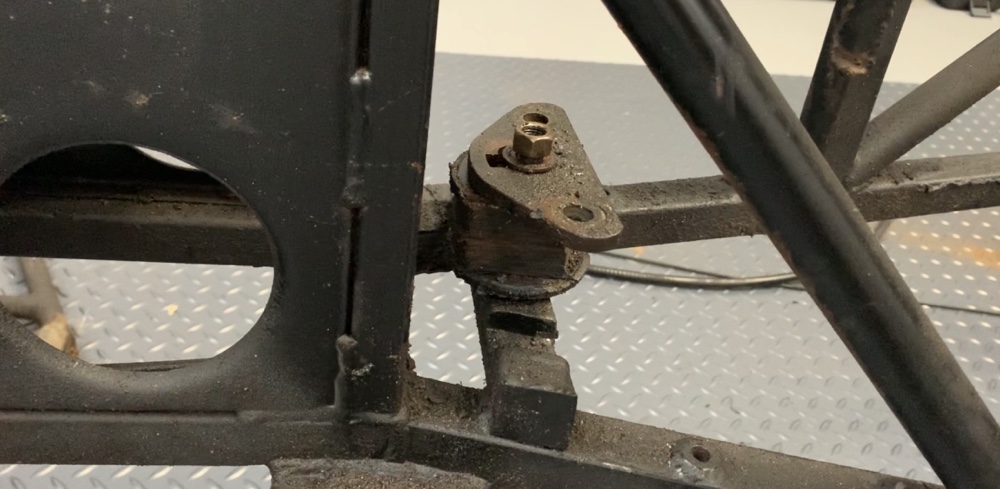
The plate itself was secured to the bottom of the transmission with a couple of bolts, the hole in the centre is a curious one. It’s a slot with a notch cut out, the notch being off centre and the witness marks show that’s where it liked to sit. Its really quite strange, by design, to have something sit deliberately off centre when you could have designed the offset in to the underlying supports.
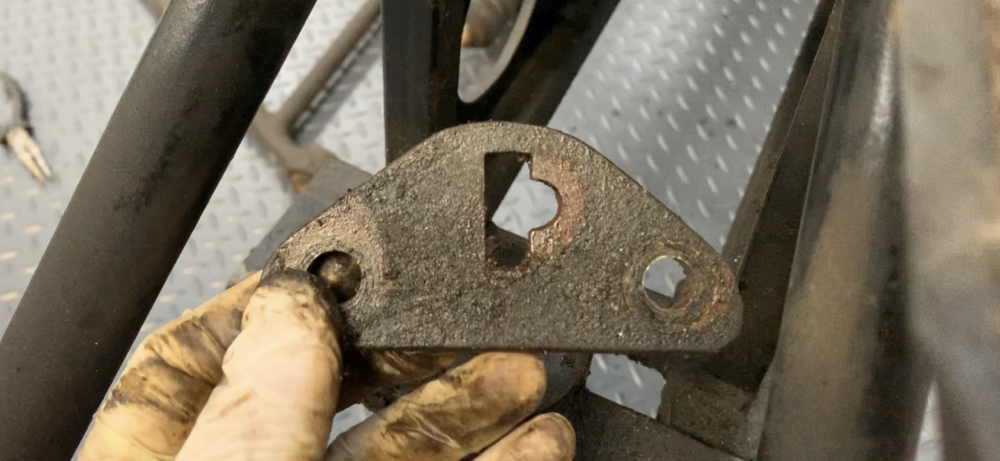
Under the mounting plate was the bushing, a chunky rubber double ender. Its been attacked with a grinder to alter the profile, no idea, doesn’t really relate to any foul condition or giving anything else clearance.
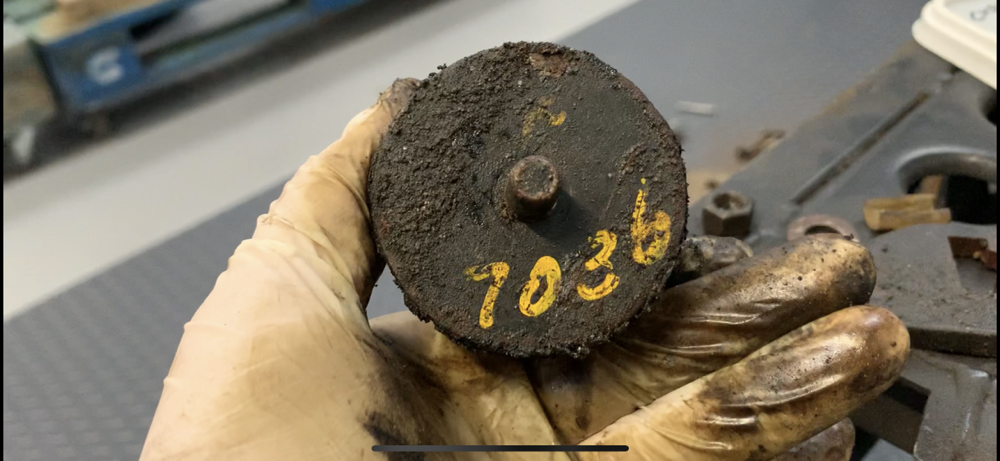
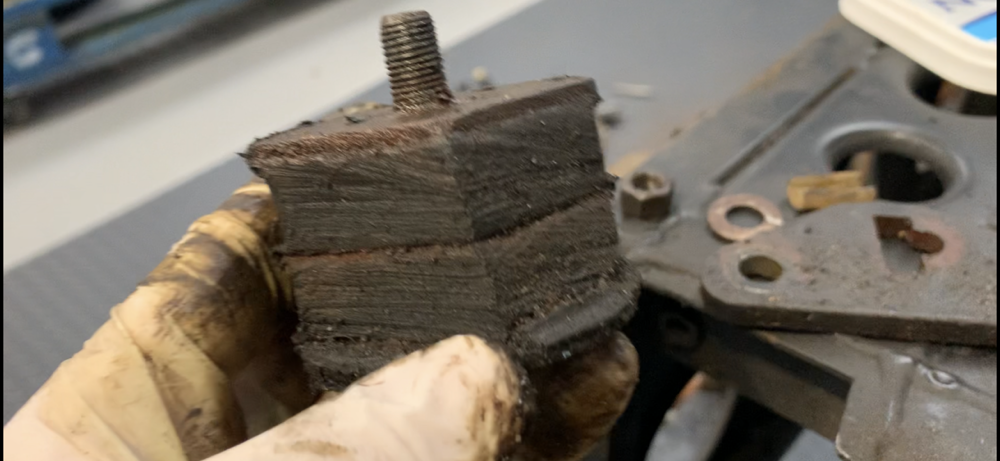
Leaving only the welded on base, which is a piece of bar stock, tapped to accept the bush’s thread. There’s also a slot machined in to the profile, this is to allow the handbrake cable to sit in there and prevent it creating an awkward bend as the cable sheath feeds in to the guide loops welded to the chassis.

This piece isn’t on any images I’ve been able to find online of other Spyder chassis. The hole to the bottom left in the image has a twin on the other side, both are redundant on our car so assume they have something to do with the original Lotus specified / Ford derived transmission.
